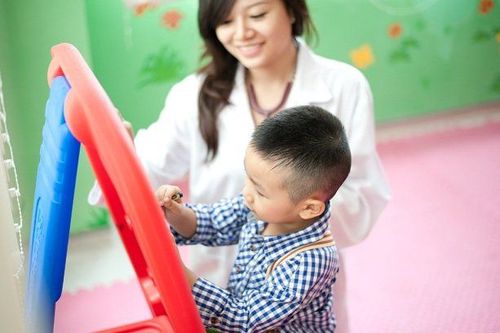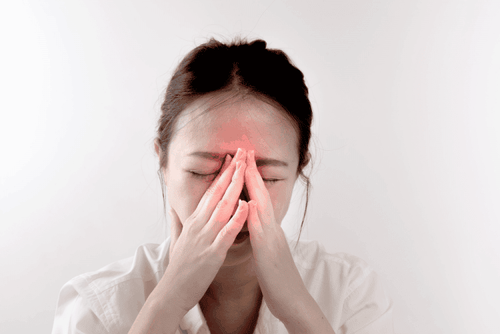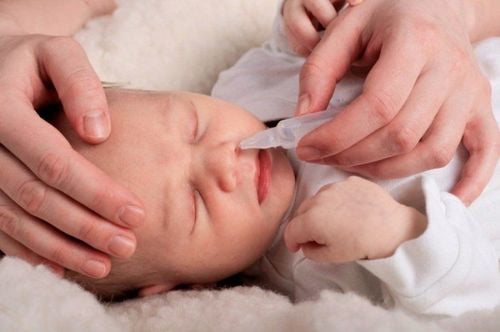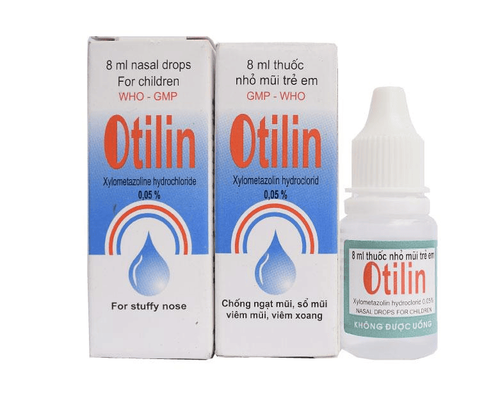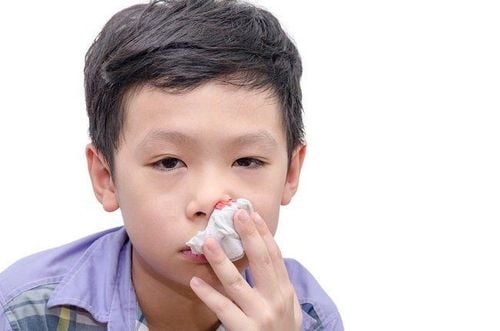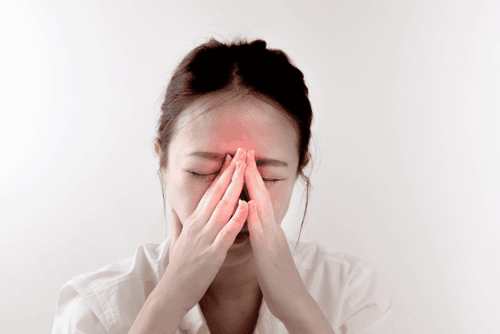This is an automatically translated article.
The article was written by Master, Doctor Tran Huu Tuan - Head of Interspecialty Department and Head of Ear - Nose - Throat Unit - Vinmec Times City International General Hospital.Acute bacterial sinusitis, if not treated properly, can also lead to a few dangerous complications that can affect the life of the child such as inflammation of the orbital tissue, inflammation of the veins of the cavernous sinuses, abscesses. epidural, brain abscess... The advice of Dr. Tran Huu Tuan - Head of Interspecialty Department - Vinmec International General Hospital will help people have more knowledge about this disease.
1. What is acute bacterial rhinosinusitis?
Sinusitis is an inflammation of the mucous membrane covering the surface of one or more facial sinuses caused by bacteria, because the lining of the sinuses is continuous with the mucosa of the nasal cavity and is mostly associated with inflammation of the nasal mucosa, hence the term rhinosinusitis. also commonly used to refer to sinusitis.2. Do children often get sinusitis?
By the age of 20, the facial sinuses are fully developed, but at the age of 12, the nasal cavity and facial sinuses have been shaped and have a ratio similar to that of an adult. The maxillary and anterior ethmoid sinuses are present from birth and develop rapidly in the early years, while the frontal, posterior and sphenoid sinuses develop later. So children can completely get sinusitis, not to mention that in children, the immune system is not yet fully developed, so children often have acute episodes of nasopharyngitis and from there, bacterial infections and become sinusitis.
Statistics show that the average child has 3 to 6 episodes of acute nasopharyngitis/year, the cause of these infections is a virus, but up to 5% are infected with bacteria and develop rhinitis acute sinus infection. Thus, the incidence of acute bacterial rhinosinusitis in children is quite large when calculating the whole community.
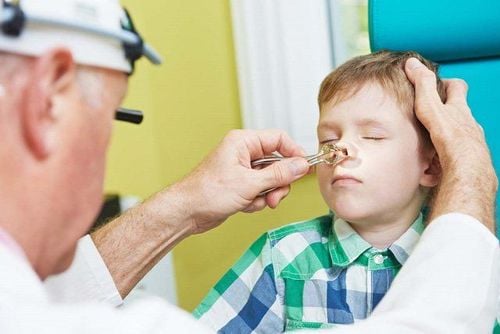
3. Is sinusitis dangerous?
While viral rhinosinusitis usually resolves without treatment within 7 to 10 days, the rate of spontaneous resolution of acute bacterial rhinosinusitis is small, so antibiotic therapy is often required.
Acute bacterial sinusitis, if not properly treated, can also lead to a few dangerous complications that can affect the life of children such as orbital inflammation, cavernous sinus thrombosis, pressure epidural car, brain abscess...
4. Why not antibiotic treatment for all cases presenting as sinusitis?
As mentioned above, children are very often infected with acute viral nasopharyngitis, this is a normal process to form the child's immune system later on, most of these nasopharyngitis resolve spontaneously within 10 days. Without any specific treatment, only 5% of superinfections become acute infectious rhinosinusitis. The widespread use of antibiotics is wasteful, increases the risk of antibiotic resistance and sometimes causes dangerous side effects such as in cases of antibiotic allergies.5. When to take antibiotics?
The answer seems to be simple when suffering from Acute Infectious Rhinitis, but in fact this is quite difficult not only for young parents but even for Family Doctors due to the clinical symptoms of inflammation. Acute viral rhinosinusitis and acute bacterial rhinosinusitis are quite similar, presenting: cough, sore throat, nasal signs such as stuffy nose, runny nose, tightness in the nose due to congestion and fever.
A few clinical features below will help distinguish these two diseases:
Acute viral nasopharyngitis Acute viral nasopharyngitis usually develops in 7-10 days, the child may still have symptoms at day 1. 10 but these manifestations improved significantly after peaking around 3-6 days of illness. Usually only mild fever and in the first day or two accompanied by systemic manifestations such as fatigue, muscle pain, these signs subside after 2-3 days while respiratory signs increase. Nasal discharge is usually clear and thin, turns thick, has a pus-like color, then becomes less and clear again before it is completely gone. This process happens naturally without antibiotics.
Acute infectious rhinosinusitis Acute infectious rhinosinusitis: there are 3 different clinical situations:
Clinical manifestations last for more than 10 days and less than 30 days and especially there is no remission. There are severe signs during the course of the development such as high fever > 39°C combined with purulent nasal discharge over 3 consecutive days. The course of the disease is according to the saddle chart, that is, the symptoms gradually decrease after peaking on days 3-4 but worsen on days 6-7, more headaches or fever reappears after the fever is gone. some days.
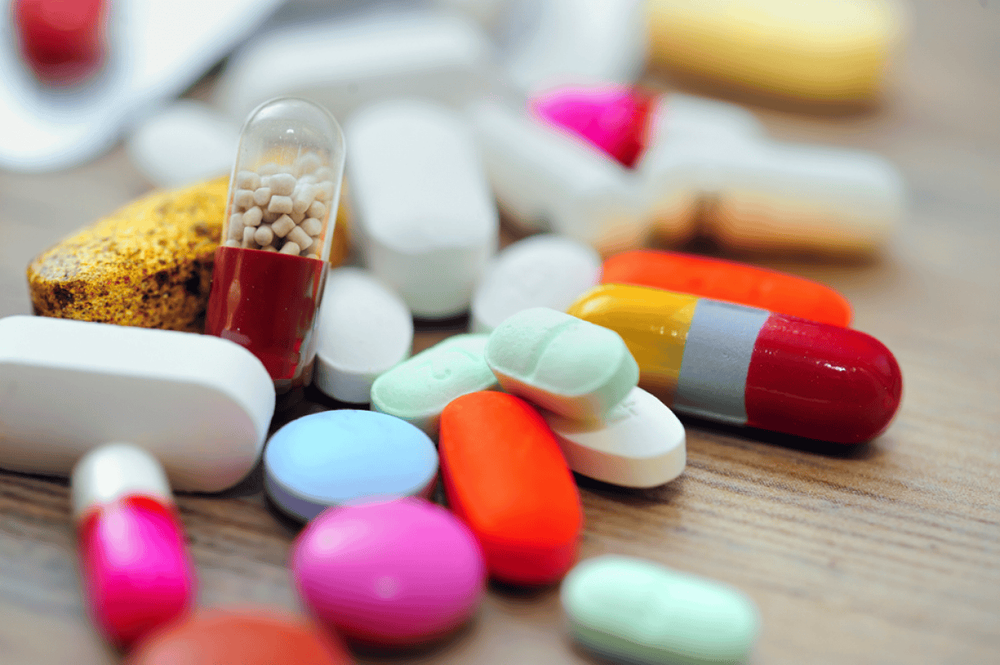
6. The role of ENT specialist in acute infectious rhinosinusitis
Correctly diagnose cases of acute bacterial sinusitis so that there is a reasonable treatment regimen to avoid indiscriminate use of antibiotics in unnecessary cases.
Detect early signs of complications Sinusitis for more aggressive treatment to limit sequelae and avoid the risk of death for children.
Endoscopic images of acute bacterial rhinosinusitis and its complications
References
Acute bacterial rhinosinusitis in children: Clinical features and diagnosis from UpToDate.com by Ellen R Wald, MD.
Professor of Pediatrics, University of Wisconsin School of Medicine and Public Health last written and updated Oct 2012
Update on diagnosis and treatment of Sinusitis by Drs. Dr. Le Cong Dinh, Bach Mai Hospital Introduced at Scientific Activities of Hanoi Association of Medical Associations 9/2012 .
Please dial HOTLINE for more information or register for an appointment HERE. Download MyVinmec app to make appointments faster and to manage your bookings easily.





